 |
Financial Management - Basic: Accounting Cycle |
1.00 |
This course will cover how to analyze and post transactions, balance a General Ledger, and identify the cash and accrual bases of accounting. You will also learn how to identify the phases of the accounting cycle and the types of accounting records and identify the concept and method of Trial Balance preparation. |
 |
Financial Management - Basic: Balance Sheet |
0.50 |
This course will cover how to identify and prepare a Balance Sheet. You will also learn how to identify and calculate the liquidity and the debt-to-total-assets ratio. |
 |
Financial Management - Basic: Basics of Accounting |
0.75 |
This course will focus on how to define accounting and identify the key accounting terms. |
 |
Financial Management - Basic: Budgeting |
1.00 |
This course will cover how to identify the importance and process of budgeting and analyze financial statements by using ratio analysis and the break-even point. You will also learn how to set objectives and identify common budgeting problems and monitor performance by using a “pro forma” financial statement. |
 |
Financial Management - Basic: Income Statement |
0.75 |
This course will cover how to identify the key terms of an Income Statement. You will also learn how to create and interpret an Income Statement. |
 |
Financial Management - Basic: Other Financial Statements |
0.50 |
This course will cover how to identify and prepare a cash flow statement. You will also learn how to identify and prepare a statement of stockholders’ equity. |
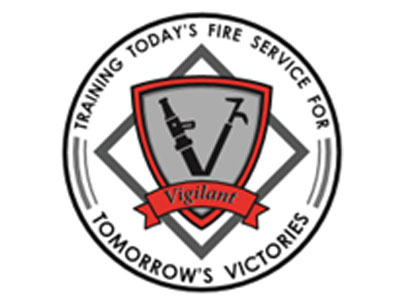 |
Fire Behavior Basics #401 (Instructor Guide) |
1.00 |
This is the Instructor Guide for Lesson #401 Fire Behavior Basics. This instructor guide provides the instructor with lesson background, key points and delivery methods. Required lesson materials including lesson plan, presentation, and evaluation quiz with answer key. Included in this guide is an explanation video of the presentation that describes each slide of the lesson. |
 |
Fire Behavior Basics (NYS02) |
1.00 |
This lesson introduces the basic chemistry and physics of fire behavior. The lesson defines combustion, reviews the fire triangle and components of the fire tetrahedron. The stages of fire develop and accompanying characteristics are discussed with a focus on heat transfer and how it plays a part in fire develop. The lesson is evaluated using a brief quiz covering the material included in the lesson. |
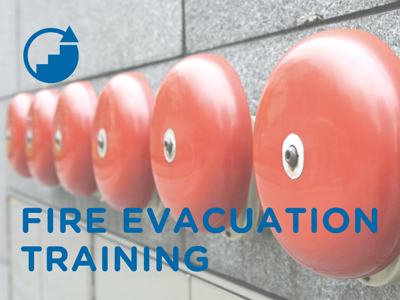 |
Fire Evacuation Training |
0.33 |
This course covers proper fire safety techniques to help keep you and your customers safe. It also covers the key elements to remember during a fire evacuation.
|
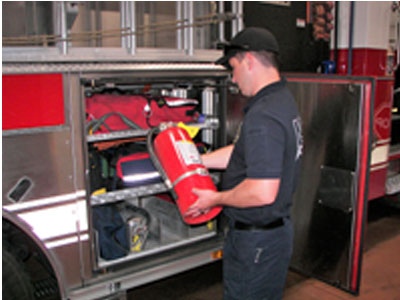 |
Fire Extinguishers (NYS03) |
1.00 |
This lesson reviews the identification, selection, and use of different types of fire extinguishers. The lesson begins with a review of the basic science of fire. The classifications are defined and described and the extinguishers that meet those classifications are identified. Fire extinguisher maintenance is described and reviewed. Finally, the PASS method of fire extinguisher operation is defined and described. |
 |
Fire Origin and Cause – Basic |
2.00 |
This course is an introductory level course that defines fire cause and origin investigation and arson awareness. This course explains fire origin, cause, and arson and a description of common fire causes. Fire cause classifications are defined, and arson motives are described. Signs of arson are identified, and methods for evidence preservation are outlined. The course is evaluated with a final exam that requires a passing score of 80%. The clock time for this course is approximately 2-hour. |
 |
Fire Prevention Principles |
1.00 |
This course will introduce the firefighter to the modern principles of fire safety. Just as the fire service has evolved since colonial times, so has the professional approach to fire prevention and safety. The fire service is at the heart of the current fire safety program, and firefighters must understand the concepts and principles at the core of these programs. This introductory course will describe these concepts and principles as well as identify where and how the firefighter fits into these programs. The clock time for this course is approximately one hour. |
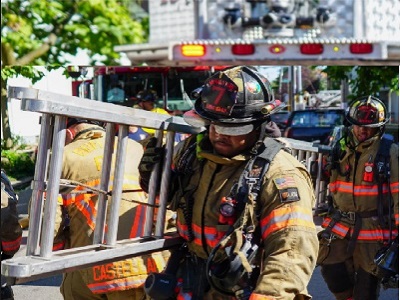 |
Fire Service Ground Ladders - BASIC |
1.00 |
This course is a basic-level introduction and review of fire service ground ladders. This course introduces the seven types of fire service ground ladders as defined by NFPA. The course includes a review of ground ladder construction, ground ladder selection by task, and safe operation of the fire service ground ladder. The course is evaluated with a multiple-choice exam that requires a passing score of 80%. The course length is approximately one hour. |
 |
Fire Suppression Tactics |
1.00 |
No other tactic on the fireground has a higher potential for saving lives and protecting property than Fire Suppression. Suppression on the fireground can be deployed in multiple strategies and performed through a variety of methods. This course will discuss the application of suppression tactics and tasks while operating in different operational modes under strategies selected as a result of assessed risk. Application of these suppression tactics are matched with the appropriate strategy and task methods are introduced. Each type of suppression task method is described in detail along with a review of its specific strengths and weakness. |
 |
Firefighter Life Safety Initiatives: How Can We Make it Better? |
1.25 |
In April of 2004, fire service leaders from across the United States gathered in Tampa, Florida, to design a new fire service culture. This new culture is built on 16 firefighter life safety initiatives entitled "Everyone Goes Home". This course will discuss the 16 initiatives that can provide the base for participants to change the culture in the fire service industry and reduce mortality rates in the line of duty.
|
 |
Fireground Communications - BASIC |
2.00 |
This course is an introductory-level presentation that introduces the firefighter to the concept of fireground operations. Fireground communication is integral to effective fireground operations, and proper communications are critical to firefighter safety. This course describes the standard communication model, identifies the communication system, and provides a procedure for conducting proper radio communications, from receiving the alarm, through operating the fireground, to terminating incident command. The course is evaluated with a final exam requiring a score of 80%. Firefighters who complete the course are provided with course materials to aid learning and further their education. The clock time for this course is approximately two hours. |
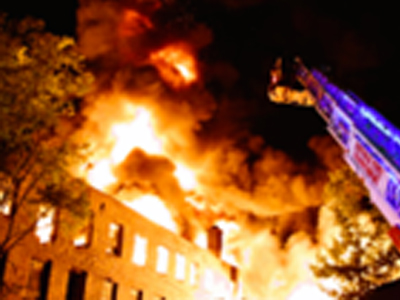 |
Fireground Operations - Strategy Tactic Task |
2.00 |
This course introduces a common language for fireground operation; strategy, tactics, and tasks in an effort to create a standardized interpretation of terminology. This course describes safe strategy selection, defines prioritized tactical objectives, and lists assigned tasks for each tactical objective dependent on strategy. This course introduces the idea of five primary tactical objectives, five secondary tactical objectives, and five functions of command that must be accomplished on every fireground. The course concludes with a procedure for the application of selecting a safe strategy, prioritizing effective tactical objectives, and assigning efficient tasks through the function of command. |
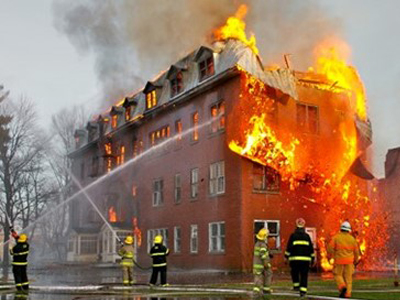 |
Fireground Operations: Safe Strategy |
2.00 |
This introductory course describes fireground strategy selection to create a safe operation. The course introduces the concept of safe fireground strategy and presents a procedure for selecting a strategy through risk assessment. Two operational modes are established, and five strategic plan options are defined for each mode. The course focuses on fire safety principles and scene safety awareness. The course is evaluated with a multiple-choice exam and requires a passing score of 80%. The clock time for this course is approximately two hours. |
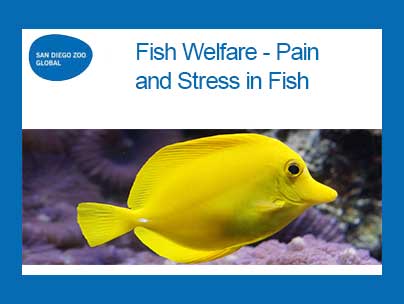 |
Fish Welfare - Pain and Stress in Fish |
1.00 |
1/12/23 jg unchecked forward seek and shut off CEUs - Fish welfare is an increasingly important subject and the aim of this webinar is to ensure that you gain an understanding of what it is and why it is so important to be concerned about the welfare of the fish under your care.
Do fish feel pain? This has been a contentious issue for the past decade. The webinar will also look at stress in fish. What is stress from a physiological viewpoint? What are the factors that cause stress? What effect does it have on fish? What can we do to decrease the stress in our aquatic environments? |
 |
Focus on Health and Stress Management |
2.00 |
Every day OST professionals dedicate themselves to caring for and nurturing children, youth, and families. Often OST professionals are so dedicated to serving others, they neglect their own needs. When this happens, OST staff can experience stress that causes them to become overwhelmed, exhausted, frustrated, dissatisfied with job responsibilities, and unappreciated. When OST professionals maintain a healthy balanced lifestyle, they are in a much better position to face the challenges of supporting and nurturing children and families with positive energy, enthusiasm, patience, and empathy. By developing self-awareness; linking their personal and professional goals; developing a healthy balanced lifestyle; and identifying and managing stressors effectively, OST staff can create and maintain a positive sense of well-being that allows them to maximize their ability to build positive relationships with children, parents, colleagues, and others. |
 |
Food Allergy Basics in Early Childhood (CDA 1 and 5) |
3.00 |
Welcome to Food Allergy Basics in Early Childhood. This course is focused on ways to prevent accidental exposure to foods that can cause an allergic reaction. You will be able to describe ways to prevent accidental exposure to foods that cause an allergic reaction. You will also be able to demonstrate how to read a food label to reduce the risk of accidental exposure to foods that can cause an allergic reaction. In addition, you will learn how to use a Food Allergy and Anaphylaxis Emergency Care Plan to care for a child with a food allergy and identify the symptoms and triggers of food allergies. This course is also designed to be part of a Child Development Associate (CDA) Credential™ curriculum. It covers Subject Area 1: Planning a Safe, Healthy Environment to Invite Learning and Subject Area 5: Managing an Effective Program Operation. |
 |
Food Allergy Basics: Emergency Response |
1.00 |
Welcome to Food Allergy Basics: Emergency Response. This course is focused on how to use a Food Allergy and Anaphylaxis Emergency Care Plan to care for a child with a food allergy.
Course Learning Objectives:
- Explain the correct use of the Food Allergy and Anaphylaxis Emergency Care Plan.
- Identify the six rights of medication administration. |
 |
Food Allergy Basics: Preventing Reactions |
1.00 |
Welcome to Food Allergy Basics: Preventing Reactions. This course is focused on ways to prevent accidental exposure to foods that can cause an allergic reaction.
Course Learning Objectives:
- Describe ways to prevent accidental exposure to foods that cause an allergic reaction.
- Demonstrate how to read a food label to reduce the risk of accidental exposure to foods that can cause an allergic reaction. |
 |
Food Allergy Basics: Symptoms and Triggers |
1.00 |
Welcome to Food Allergy Basics: Symptoms and Triggers. This course identifies the symptoms and triggers of food allergies.
Course Learning Objectives:
- Define food allergy.
- Identify the foods that cause 90% of all food allergies.
- List the symptoms of food allergies. |
 |
Food Safety Practices (CDA 1) |
2.00 |
Safeguarding young minds and bodies is paramount in child care, and food safety plays a crucial role. This course empowers both center and home-based practitioners with vital knowledge and skills to combat foodborne illness (FBI), prevent choking hazards, and minimize other food-related injuries. Discover comprehensive guidelines for implementing effective food safety practices, ensuring you cultivate a healthy and secure environment for every child entrusted to your care. |


























